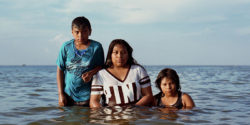“To raise the call of our faith traditions as an act of resistance against the cruelty and violence that dominate US policy and actions,” says Street Artist and social activist Chip Thomas (aka Jetsonorama) about this new project of wheat-pasting his photographs that feature jugs of water in the Arizona desert.
Sorry. What?
Yes, jugs of water.
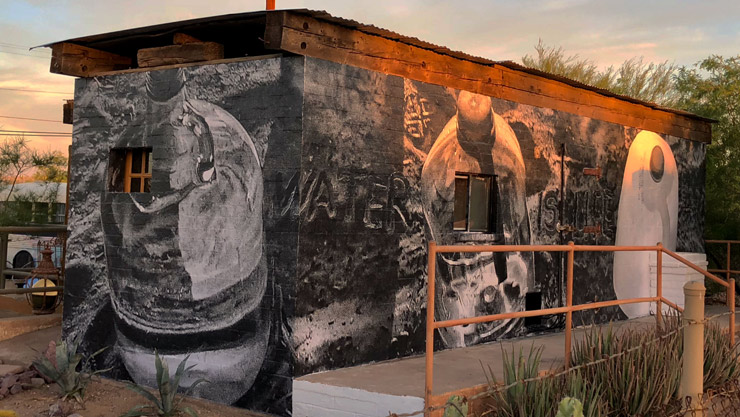
Chip Thomas. AJO, Arizona. July. 2018. (photo © Chip Thomas)
Yes, it has come to this, in a nation that often proudly brays sanctimoniously about its Christian traditions and of being full of good God-fearing people. Somehow we think that its perfectly acceptable to go around destroying jugs of water in the desert because people who are thirsty might drink it.
So this is what Jesus would do, right? The Lord and Savior, who in the Bible actually multiplied fish and loaves of bread to feed people – would approve of us stomping among the cacti and tumbleweeds under the punishing hot sun in the desert and dumping on the sand jugs of water that were left for poor desperate Christians (~80 percent of Mexicans are Catholic), some of whom are possibly even named Jesus?

Chip Thomas. AJO, Arizona. July. 2018. (photo © Chip Thomas)
No More Deaths is a bluntly stark name for a humanitarian group, but there’s little room for romantic or cleverly turned phrases when you are talking about a grassroots organization that is helping people to stay alive.
“This last year has been rough for humanitarian aid workers in Ajo with No More Deaths volunteers charged with misdemeanors and fined for leaving water for migrants out on the Cabeza Prieta Wildlife Refuge,” writes volunteer Maria Singleton in a letter to Chip that helped inspire this new public work. “In order to get a permit to go on the wildlife refuge they are requiring people to sign a form that says they will not leave water, socks or first aid items out.”
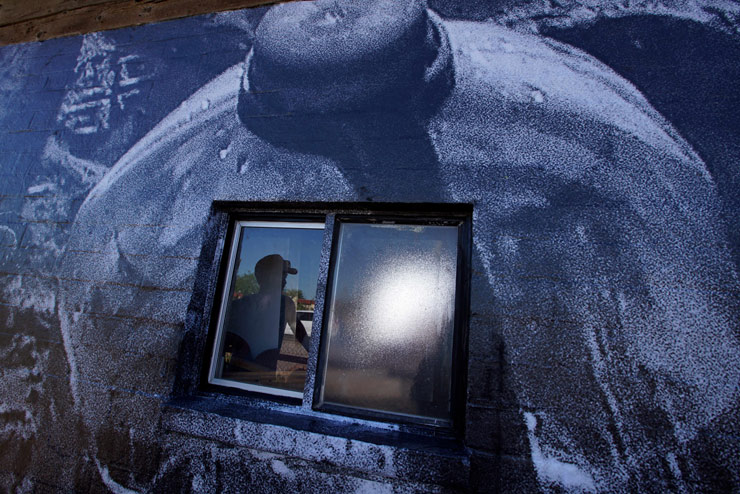
Chip Thomas. AJO, Arizona. July. 2018. (photo © Chip Thomas)
According to the Bible in the book of Matthew 15:32, Jesus called his disciples to him and said, “I have compassion for these people; they have already been with me three days and have nothing to eat. I do not want to send them away hungry, or they may collapse on the way,” which leads you to believe that Jesus would have condemned the actions and the people who destroy water and food supplies here if he were to, say, pass judgment on them.
The new art installation is directly across from the entrance to Cabeza Prieta which is the national wildlife refuge near the border of the US and Mexico and in a region that has the highest migrant death rate due to the brutality of the desert crossing. “Some 32 sets of human remains were found there last year, according to the Pima County office of the medical examiner, making it one of the region’s deadliest crossing routes,” says an article in The Guardian earlier this year.
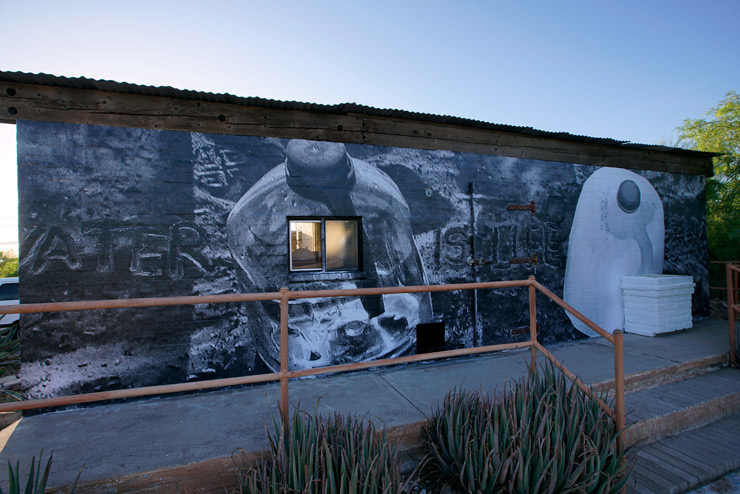
Chip Thomas. AJO, Arizona. July. 2018. (photo © Chip Thomas)
The Street Artist, who has used his own photographs to wheatpaste for on walls for a decade or so, says that a member of the humanitarian/religious group called Ajo Samaritans offered to him and his small team to create his new artwork on the walls of the ironically named “ice house” in the town of Ajo.
Ajo Samaritans describe themselves and their mission on their website like this; “Samaritans are people of faith and conscience who are responding directly, practically, and passionately to the crisis at the US/ Mexico border. We are a diverse group of volunteers around Ajo that are united in our desire to relieve suffering among our brothers and sisters and to honor human dignity. Prompted by the mounting deaths among border crossers, we came together to provide food and water, and emergency medical assistance to people crossing the Sonoran Desert.”
“We were welcomed warmly by the Ajo activist community to whom I’d like to recognize for their expression of shared humanity and for their bravery,” says Chip. “Shout out to my crew as well – Justin Clifton, Drew Ludwig, Stash Wislocki and Jerrel Singer.”
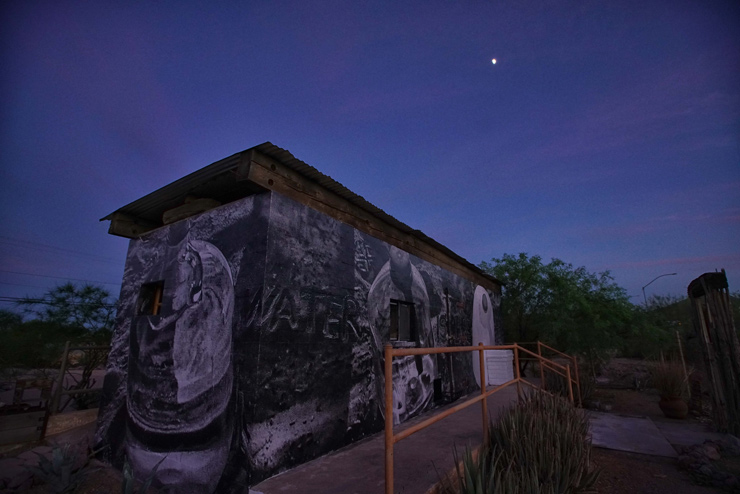
Chip Thomas. AJO, Arizona. July. 2018. (photo © Chip Thomas)
 BROOKLYN STREET ART LOVES YOU MORE EVERY DAY
BROOKLYN STREET ART LOVES YOU MORE EVERY DAY



